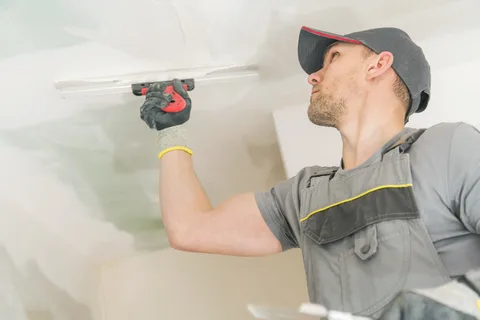Dry Ice Blasting for Sensitive Surfaces: A Modern Cleaning Method
Introduction
Cleaning surfaces that are easily damaged can be a real challenge. Some materials can’t handle pressure, moisture, or chemicals. These include things like soft plastics, painted metals, electronics, and delicate equipment used in food or medical industries.
Traditional cleaning methods such as scrubbing, high-pressure washing, or chemical spraying often do more harm than good. That’s where dry ice blasting comes in. It’s a safe and efficient method that cleans without damaging fragile surfaces.
What Is Dry Ice Blasting?
Dry ice blasting is a method of cleaning that uses small pellets of solid carbon dioxide. These pellets are pushed out at high speed using compressed air and hit the surface that needs cleaning. When the dry ice hits the surface, it removes dirt, grease, paint, or other unwanted materials. Right after that, the dry ice turns into gas and disappears.
The process is clean, fast, and leaves no residue behind. There is no water, no dust, and no need for extra cleaning once the blasting is done.
Why Dry Ice Blasting Is Safe for Delicate Materials
Many cleaning methods are not suitable for delicate surfaces. High-pressure water can cause rust or electrical damage. Chemicals can react with surfaces or leave behind harmful residues. Abrasive methods can scratch or wear down the material.
Dry ice blasting solves all of these problems. The dry ice pellets are not hard enough to scratch surfaces, and since they turn into gas on contact, they don’t leave anything behind. This makes the process ideal for cleaning sensitive items.
How the Cleaning Works
There are three main actions that happen during dry ice blasting. First, the dry ice pellets hit the surface at high speed, knocking loose any dirt or grime. Second, the extreme cold of the dry ice causes the unwanted material to shrink and become brittle. Third, the dry ice turns into gas, expanding under the debris and lifting it away from the surface.
Because of this combination, dry ice blasting is powerful enough to clean thoroughly but gentle enough not to damage the surface underneath.
Common Uses in Different Industries
Dry ice blasting is used in many fields where both cleanliness and surface protection are important.
In the electronics industry, circuit boards, control panels, and sensors are cleaned using this method. Since no water or static is involved, there is no risk of short-circuiting or damaging sensitive parts.
In food processing plants, machines often need to be cleaned without chemicals or water. Dry ice blasting removes grease, food particles, and bacteria without introducing any risk to the product or the equipment.
Medical and pharmaceutical companies use dry ice blasting to keep tools and lab equipment clean and safe. It’s an effective way to clean in sterile environments without using harmful cleaning agents.
In automotive and aerospace industries, it’s used to clean parts like molds, engines, and tools without damaging their surfaces or finishes.
It’s even used in restoration work, where old or valuable items like antique furniture, stone monuments, or historical buildings need to be cleaned carefully.
No Disassembly Required
Another big advantage of dry ice blasting is that it often doesn’t require taking machines apart. Since the process is dry and gentle, equipment can often be cleaned in place. This reduces downtime and helps save time and labor costs.
For companies with tight schedules or continuous production lines, this is a major benefit.
Environmentally Friendly and Safe for Workers
Dry ice blasting is not only safe for delicate surfaces, but also better for the environment and worker safety. It does not use toxic chemicals, so workers are not exposed to harmful substances. The dry ice is usually made from recycled carbon dioxide, so it doesn’t add more carbon to the air.
Because the dry ice disappears during cleaning, there’s no dirty water or leftover material to deal with. This reduces the need for disposal and makes the cleaning process safer and easier overall.
When Dry Ice Blasting May Not Be the Best Option
Although dry ice blasting is very useful, it’s not suitable for every job. If the surface is covered in very thick rust or a heavy layer of paint, other methods like sandblasting may work better.
Also, the equipment used for dry ice blasting can be expensive, and operators need to be trained to use it correctly. In some cases, smaller cleaning jobs may not justify the cost unless the material being cleaned is very sensitive or valuable.
Final Thoughts
Dry ice blasting is an effective and gentle cleaning method for surfaces that can’t handle moisture, chemicals, or abrasives. It works by using cold and speed to remove dirt and unwanted materials, without leaving anything behind.
Whether it’s cleaning a circuit board, a food machine, a historical building, or an airplane part, dry ice blasting gets the job done without causing harm. It’s fast, safe, and reliable, making it an ideal choice when delicate surfaces are involved.
As industries continue to demand cleaner, safer, and more precise cleaning solutions, dry ice blasting is becoming a trusted tool for professionals across many fields.
